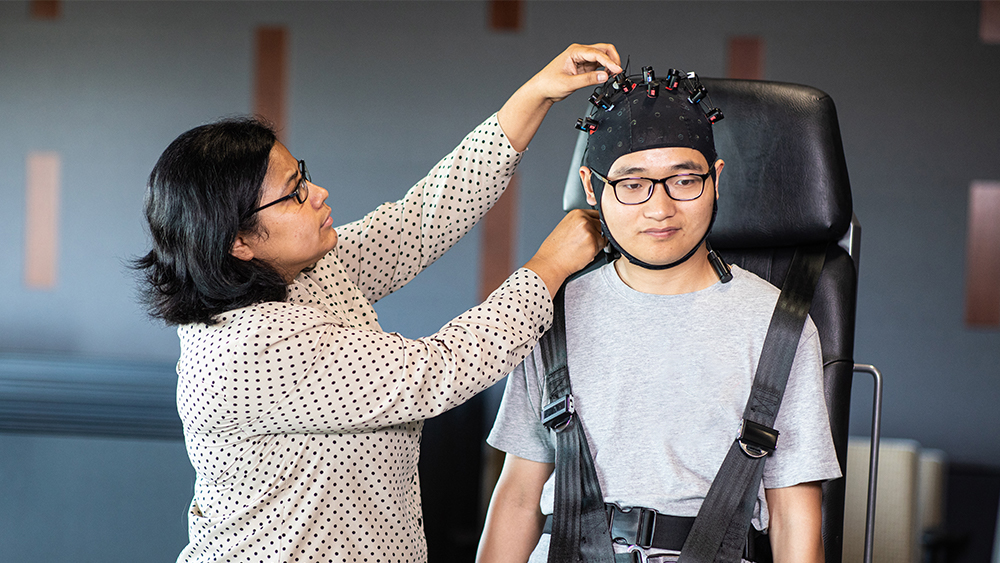
Research on human-robot interactions in the workplace will empower diverse populations of workers to be more productive in the future. Researchers at Texas A&M University and across the nation are collaborating to improve the understanding of human-robot interactions in high-risk industries, such as manufacturing and offshore oil and gas.
Dr. Ranjana Mehta, lead researcher and associate professor in industrial and systems engineering, and Dr. Prabhakar Pagilla, professor in mechanical engineering, along with collaborators around the country have been awarded a $1.2 million National Science Foundation grant for their work in human-computer interactions, human-robot interactions and neuroergonomics.
The project, “Augmenting Human Cognition with Collaborative Robots,” will contribute new information to human-robot interaction research through the development of safer and more efficient collaborative robot interactions.
Collaborative robots work directly with humans in a shared space to perform tasks. These robots are used in many industries, including manufacturing, mining, construction and energy. Increasing the safety and efficiency of these collaborations between humans and robots by predicting human emotional states and how the robots will adapt to these states is a major goal of the research.
“Collaborative robotics is a growing area in robot technology and will be an estimated $13 billion business by 2025. It is thus timely to develop technical intelligent support mechanisms to enhance safer human-robot interactions and teaming,” Mehta said.
To accomplish this goal and increase worker safety, the researchers will use wearable brain imaging to understand fatigue and stress states of workers as they interact with the robots in manufacturing facilities in Texas. The use of machine learning will enable the robots to react to workers' cognitive and contextual states. Researchers will also use this information to develop an augmented reality assistant that will provide workers with information needed to safely perform their jobs with collaborative robots.
“The project also seeks to empower new populations of workers, such as workers with disabilities, allow older workers to remain in the workforce, and potentially assist novice workers, thereby reducing skills gaps and improving work efficiency,” Mehta said.
The research will also shed light on the socio-economic and behavioral challenges encountered as workers interact with robots, such as workforce education, trust and technology acceptance.
This research will be conducted with collaborations at the Advanced Robotics Lab at Texas A&M, the Human Interaction Lab at Montana State University and the Human-Systems Integration Lab at Clemson University.